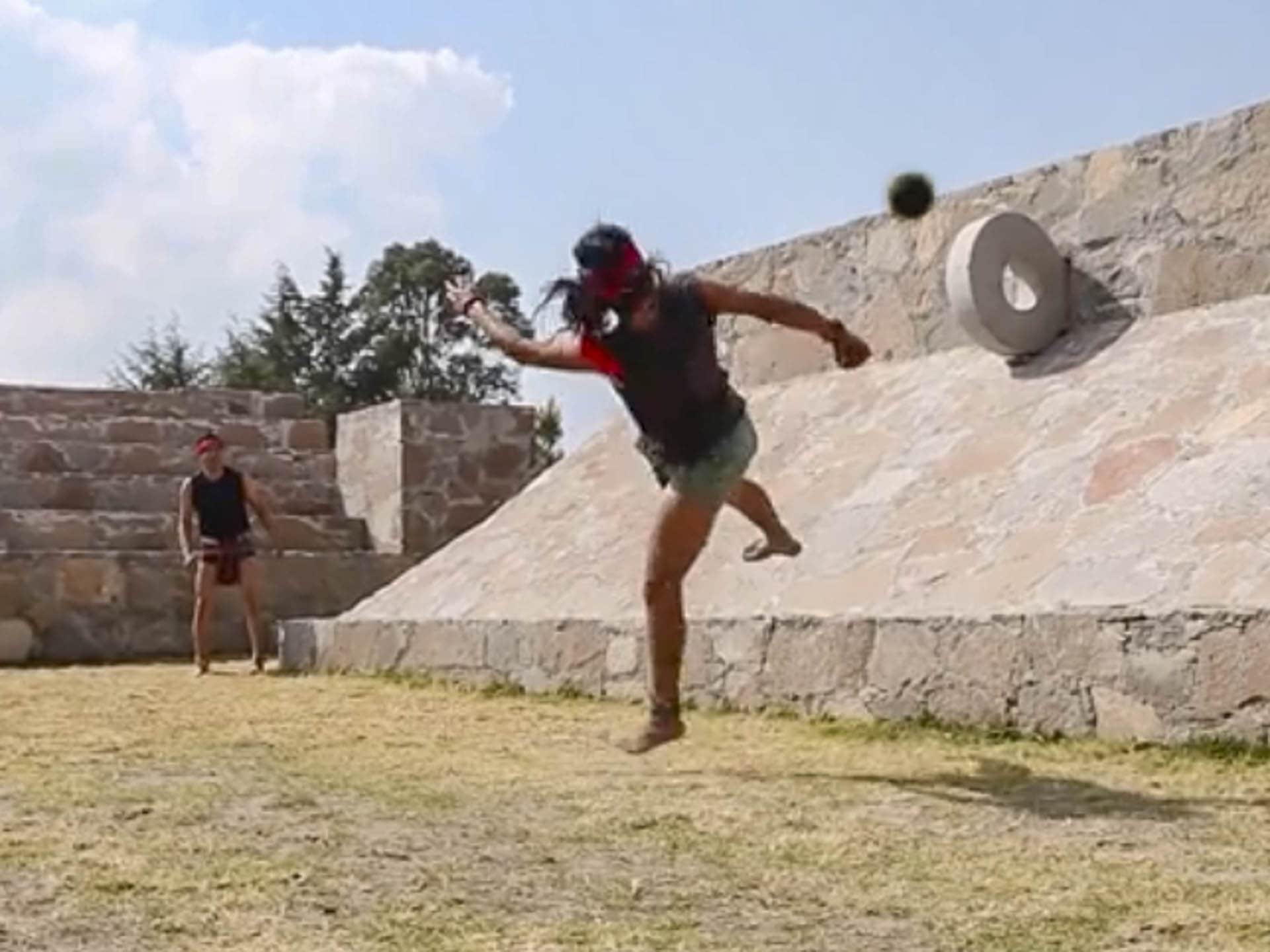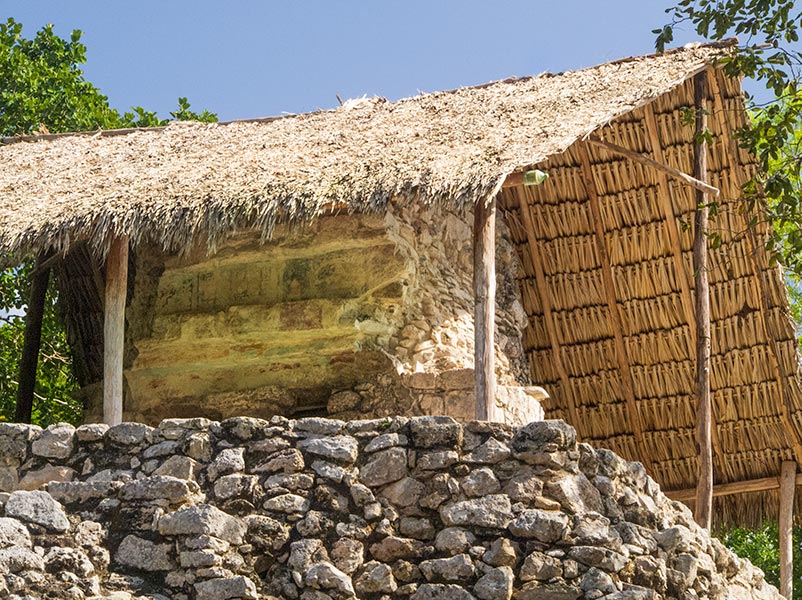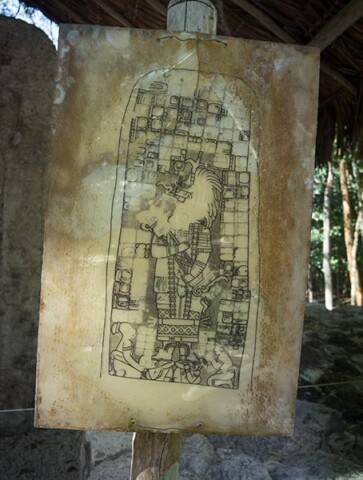Mixtecs, indigenous Mexicans, have been in the news lately. Half a millennium ago around February 18, 1519, Cortés and his crew landed at Cozumel. Mexico’s new president announced he’s going to improve relationship with the Mixtecs. Yalitza Aparicio, the lead actress in the movie Roma, is Mixtec. And a recent article in the Globe and Mail talked about the resurgence of ulama, an ancient Mayan ball game. All of which reminded Magellan and me of our trip to Cobá, one of the oldest indigenous settlements on the Yucatán Peninsula.
Chichen Itza it’s not. Cobá has fewer tour buses, less crowds and no concessions within the site.
Once the most powerful city in the region, Cobá controlled farmland, trade routes and water sources.(Cobá means ruffled waters, a reference to its reedy lakes.) It was first inhabited around 50 AD, grew to a population of 50,000 and was abandoned after the Spanish conquered the Yucatán around 1550 AD. Its ruins weren’t discovered until the late nineteenth century and Cobá didn’t open to the public until 1983.
Cobá’s Nohoch Mul is the tallest pyramid in theYucatán. Magellan and I climbed the 120 stone steps to the top (42 metres) from where we could see mounds of unexcavated ruins peeking above distant trees. Even now, ninety-five percent of Cobá is unexcavated, covered by jungle. Archeologists estimate there are 6,500 structures spread over seventy square kilometres.
Cobá is also famous for having had the largest network of ceremonial stone causeways in the ancient Mayan world, sacbes (white roads) with one that extended for a hundred kilometres. Sacbes were constructed from stones raised to a height of one to two meters and then covered with white mortar. The Mayans had neither wheeled transport nor horses, so it’s likely sacbes were built for religious processions and pilgrimages. There are fifty sacbes onsite of which sixteen are open to the public, so as you can guess, it takes hours to see Cobá. Bring a lunch!
In ancient times at one intersection of four sacbes, there was a domed observatory. Remember our history (grade seven?) when we learned about the Mayans? Me neither. But our guidebook reminded us that the Mayans developed one of the world’s most accurate calendars and had calculated every solar and lunar eclipse to 2012. The observatory at Cobá was shaped like a cacao bean—the symbol of wealth. I’d have paid a lot of money for an iced coffee on the hot day in January when we were there.
But what really fascinated us about Cobá was the ballgame they played—ōllamaliztli, also called ulama and Pok-A-Tok. The game symbolized the trajectory of the sun and moon and was a metaphor for the conflict between good and evil, the struggle between life on Earth and the supernatural underworld. Five ōllamaliztli courts have been found at Cobá of which two have been well preserved.
What a game that ōllamaliztli. Players attempted to bounce a heavy rubber ball—weighing four kilos—through a narrow stone ring affixed seven metres up on the wall. But get this. Players, usually three to five men per side, could only strike the ball with their hips, head, shoulders, elbows or wrists—using their hands or feet wasn’t allowed. I suppose the shield-like protection called yokes made from frames stuffed with cotton gave them some protection. But remember the weight of a women’s shot put ball? The ōllamaliztli ball weighs almost as much—think of giving that a good whack with your hip. Yikes! The rules were so complicated that games went on for days.
“Sounds dangerous,” I said to Magellan as we read about it in our guidebook.
The article in the Globe and Mail says today’s players get fractured elbows, broken kneecaps, cracked skulls, damaged kidneys and, hang onto your pants, ripped anuses. But it was worse in ancient times—at ritual games and those held to settle disputes, the captain of the losing team was sacrificed and sometimes, so was the entire team. That being said, children played ōllamaliztli for recreation and some archeologists believe women may have played it for fun, too.
The Spanish banned ōllamaliztli. But about five years ago it was revived. There’s a Mixtec league in Mexico City and it’s now being played in other parts of the country, too. One version is played at night with the ball on fire!
Who knows, maybe ōllamaliztli will be played again on the courts at Cobá one day. I’m not sure I’d even want to watch it…
Navigation
You can watch ōllamaliztli being played in the article in the Globe and Mail by Stephanie Nolen, January 17, 2019, on Wiki and YouTube.
Stuart, Gene S. and Stuart, George. E. National Geographic Society Lost Kingdoms of the Maya. Ohio: R.R. Donnelly & Sons, 1993.
Taylor, Peter Shawn. “Cortés the killer? It’s Complicated.” The National Post. February 19, 2019.























4 Responses
Entertaining and informative, thanks! I have trouble learning where the moon may be tomorrow, let alone in decades. The ideas of a lightning ax and women rulers are attractive. That is a lot of stone used for building. They would have been very helpful for farmers’ stone picking in parts of SK.
Good point re the stone in SK; we could have had pyramids of them on our farm.
We saw one of these courts when we were in the Yucatán Peninsula a number of years ago. I had no idea how the game was played until I saw this video – yikes! We did hear from the tour guide how unfortunate it was for the losers…….You do realize how flat the land is when you crawl up one of those pyramids. Loved all the information in this blog – quite the culture!
The Mayans created a fascinating culture. It will be interesting what is learned as more of their structures are excavated.